Back on July 28, I told the story in “The Fatal Attraction” of a gourmet restaurant in Gold Hill, Colorado, that somehow produced great food with the help of a fantastically dedicated staff in a small town nestled in the mountains. I also noted that the surrounding communities had suffered both wildfires in the past and torrential floods in September 2013, from which they are still recovering. I recounted a few details of some presentations by the mayors of both Boulder and Lyons, and their city manager and town administrator, during the annual Natural Hazards Workshop in nearby Broomfield, Colorado.
I had the opportunity just last week to spend three days in Boulder at the Third International Conference on Urban Disaster Reduction (ICUDR), which attracted sponsoring delegations from Taiwan, Japan, and New Zealand, and other attendees from nations like Algeria. I will discuss later some of what transpired at the conference, but here I wish to note that the conference provided the opportunity to join a field tour to Lyons, where we were joined by Mayor John O’Brien and Town Administrator Victoria Simonsen, both of whom seem to personify resilience in their approach to rebuilding a town that, at the height of the flood, was divided by the rampaging water into six islands and saw a 400-foot gouge cut through the heart of the town. We were joined on the bus by Professor Andrew Rumbach of the University of Colorado-Denver College of Architecture and Planning, whose students have been assisting the town with plan development; details and the plan itself are available at their website, resilientcolorado.org.
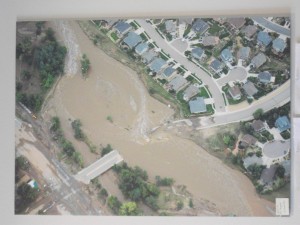
This aerial photo on the wall of the visitor center shows the damage inflicted by the flood on a major local bridge.
It is less my intent here to reiterate the flood statistics that were shared (for those see the box below), but to provide a photographic rendering of the condition of Lyons one year later, after thousands of hours of volunteer and paid work have been expended to restore homes, utility services, and some semblance of normal life to a town that was on the verge of destruction just a year ago. The town also received some planning
assistance from the American Planning Association through the pro bono visit of an APA Community Planning Assistance Team earlier this year. One thing that is very clear is that the town’s leadership is very gracious about acknowledging the extent of such outside help. Without it, Lyons would most likely never have mustered the resources to stage its comeback.
Lyons: The Numbers
- Normal stream flow: 120 to 200 cubic feet per second (cfs)
- Stream flow at height of flood: 30,000 cfs
- Streams involved: North and South St. Vrain Creek, which meet to form confluence in Lyons
- Size of gash cut through center of town by flood waters: 400 feet
- Deaths: 1
- People evacuated: ~2,000
- Population of Lyons: 2,035
- Homes damaged: 211
- Homes substantially damaged: 84
- Trees lost in flood: ~10,000
Jim Schwab
Views of damage in Lyons’s Confluence neighborhood, so called because it is near where the North and South St. Vrain Creeks merge:
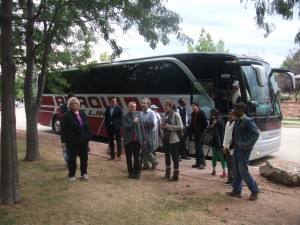
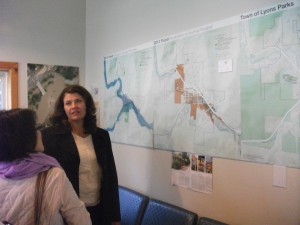
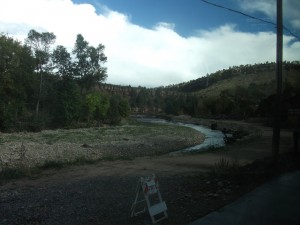
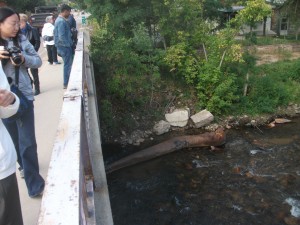
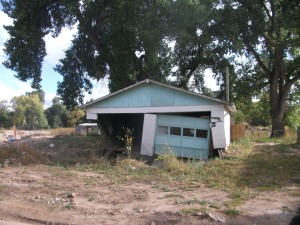
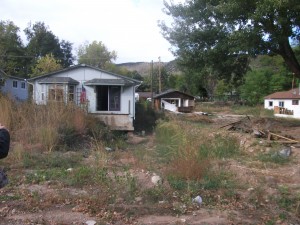
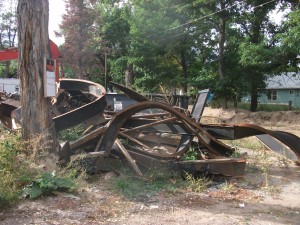
Trackbacks/Pingbacks